-

May
05
Interpretive Summary: Influence of environmental factors and genetic variation on mitochondrial DNA copy number

This study investigated the genetic and non-genetic factors associated with mtDNA CN in a beef cattle population of 2,371 animals using whole-genome sequencing at low depth.
Read more
-

Apr
27
USDA report says food prices will continue to rise

The United States Department of Agriculture’s (USDA’s) Economic Research Service (ERS) has published the Food Price Outlook, 2022 report, using data from the February 2022 Consumer Price Index and Producer Price Index. The report found that food prices are expected to increase drastically over the next few months.
Read more
-

Apr
27
USDA establishes final rule for organic dairy
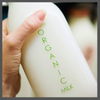
The United States Department of Agriculture’s (USDA) Agricultural Marketing Service (AMS) published the highly anticipated Origin of Livestock final rule for organic dairy. The amendment to the rule is said to increase uniformity in the origin of livestock production practice for organic dairy animals and reduce variance between the approaches taken by certifying agents.
Read more
-

Apr
27
USDA announces resources for meat and poultry industry

The United States Department of Agriculture (USDA) announced additional resources to increase and expand meat and poultry processing capacities. Up to $23.6 million is available to processors for technical assistance through the Meat, Poultry Readiness Grant program (MPIRG program).
Read more
-

Apr
27
US Japan reach trade agreement regarding beef

“This is a win-win for American ranchers and Japanese consumers,” said United States Ambassador to Japan, Rahm Emanuel. “It ensures certainty for years and shows American beef can compete and win anywhere anytime.”
Read more
-

Apr
27
Senate passes Ocean Shipping Reform Bill

The act seeks to resolve supply chains and ease shipping backlogs. It is important to note, that differences exist between the House and Senate versions, which will require dialogue between the two chambers.
Read more
-

Apr
27
Prop 12 goes to the Supreme Court

The Supreme Court of the United States (SCOTUS) has announced it will hear the case brought by the National Pork Producers Council (NPPC) and American Farm Bureau Federation (AFBF) against California’s Proposition 12 (Prop. 12). “It's a very exciting decision, it means the Supreme Court is interested in reviewing whether or not what California has done here is constitutional,” said Travis Cushman, Senior Counsel for Public Policy at AFBF.
Read more
-

Apr
27
Pork producers request congressional support

“Challenges facing our industry continue to evolve, and we hope our efforts this week help lawmakers understand why these issues are so important to the livelihoods of producers and the future of our industry,” said Terry Wolters, NPPC president.
Read more
-

Apr
27
Feeding the Economy Report released

To measure the total economic impact of the sectors, the analysis also includes the direct and indirect economic activity surrounding these industries, capturing both upstream and downstream activity. For example, when a farm equipment retailer hires new employees because farmers are buying more tractors, experts consider the new salaries an indirect impact.
Read more
-

Apr
27
DGA 2025-2030 public comments open in April

The DGA provides science-based advice on what to eat and drink to promote health, reduce the risk of chronic disease, and meet nutrient needs. It is designed for policymakers and nutrition and health professionals to help all individuals and their families consume a healthy, nutritionally adequate diet.
Read more
-

Apr
27
Dairy groups encourage improving nutrition security to USDA

Earlier this year, USDA announced transitional standards that will begin in the school year (SY) 2022-2023, running through SY 2023-2024. The goal is to give schools time to transition from current, pandemic operations, toward more nutritious meals.
Read more
-

Apr
21
Interpretive Summary: Incomplete degradation products of galactomannan from Sesbania cannabina modulated the cecal microbial community of laying hens
.png?sfvrsn=b6c04dd1_0)
The health and nutritional status of poultry are largely interconnected with the gut microbiome, which directly or indirectly affects gut morphology, nutrition, and immune responses.
Read more
-

Apr
21
Interpretive Summary: Oxidation of amino acids, glucose, and fatty acids as metabolic fuels in enterocytes of post-hatching developing chickens
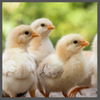
Glucose and fatty acids have long been regarded as the primary sources of energy for the absorptive epithelial cells (enterocytes) of the avian small intestine. However, little is known about the use of amino acids for ATP production in these cells.
Read more
-

Apr
21
Interpretive Summary: Pleomorphic adenoma gene 1 (PLAG1) promotes proliferation and inhibits apoptosis of bovine primary myoblasts through the PI3K-Akt signaling pathway
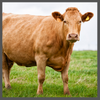
Pleomorphic adenoma gene 1 (PLAG1) is a critical candidate gene that affects bovine stature and height. Past studies have focused on correlations between PLAG1 and quantitative traits.
Read more
-

Apr
21
Interpretive Summary: Calcium-sensing receptor is not expressed in the absorptive enterocytes of weaned piglets
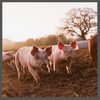
The calcium-sensing receptor (CaSR) has been identified as a nutrient sensor along the gastrointestinal tract and plays a pivotal role in food digestion, nutrient absorption, and energy metabolism.
Read more
-

Apr
21
Interpretive Summary: Oxidative stress biomarkers and free amino acid concentrations in the blood plasma of moderately exercised horses indicate adaptive response to prolonged exercise training

Performance horses are subjected to numerous stressors. These stressors may subsequently impact their overall performance. The present study measured oxidative stress biomarkers in the blood of exercising horses.
Read more
-

Apr
21
Interpretive Summary: CCK and GLP-1 release in response to proteinogenic amino acids using a small intestine ex vivo model in pigs
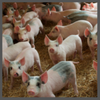
Understanding which dietary amino acids (AA) may impact the release of gut hormones involved in the modulation of feed intake, such as cholecystokinin (CCK) and glucagon-like peptide 1 (GLP-1), can help improve pig feed formulations.
Read more
-

Apr
21
Interpretive Summary: Evaluation of optimal dietary calcium level by bone characteristics and calcium metabolism-related gene expression of broilers from 22 to 42 d of age
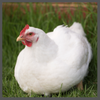
The present experiment was conducted to evaluate an optimal dietary Ca level by bone characteristics and Ca metabolism-related gene expression of broilers fed a corn-soybean meal diet from 22 to 42 d of age.
Read more
-

Apr
21
Interpretive Summary: Equine enterocytes actively oxidize L-glutamine, but do not synthesize L-citrulline or L-arginine from L-glutamine or L-proline in vitro

The amino acid arginine (Arg) is a precursor for the synthesis of multiple biological molecules including nitric oxide, polyamines, and creatine that are involved in cell proliferation, cellular remodeling, dilation of blood vessels, and phosphocreatine production for a readily available source of energy.
Read more
-

Apr
14
Interpretive Summary: Polyamines protect boar sperm from oxidative stress in vitro
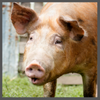
Boar semen preservation and artificial insemination are widely used in the pig industry. Although preservation in vitro prolongs sperm lifespan, reactive oxidative species (ROS) also accumulate in sperm with the increased preservation period.
Read more
 MayInterpretive Summary: Influence of environmental factors and genetic variation on mitochondrial DNA copy number
MayInterpretive Summary: Influence of environmental factors and genetic variation on mitochondrial DNA copy number This study investigated the genetic and non-genetic factors associated with mtDNA CN in a beef cattle population of 2,371 animals using whole-genome sequencing at low depth.
This study investigated the genetic and non-genetic factors associated with mtDNA CN in a beef cattle population of 2,371 animals using whole-genome sequencing at low depth. AprUSDA report says food prices will continue to rise
AprUSDA report says food prices will continue to rise The United States Department of Agriculture’s (USDA’s) Economic Research Service (ERS) has published the Food Price Outlook, 2022 report, using data from the February 2022 Consumer Price Index and Producer Price Index. The report found that food prices are expected to increase drastically over the next few months.
The United States Department of Agriculture’s (USDA’s) Economic Research Service (ERS) has published the Food Price Outlook, 2022 report, using data from the February 2022 Consumer Price Index and Producer Price Index. The report found that food prices are expected to increase drastically over the next few months. AprUSDA establishes final rule for organic dairy
AprUSDA establishes final rule for organic dairy The United States Department of Agriculture’s (USDA) Agricultural Marketing Service (AMS) published the highly anticipated Origin of Livestock final rule for organic dairy. The amendment to the rule is said to increase uniformity in the origin of livestock production practice for organic dairy animals and reduce variance between the approaches taken by certifying agents.
The United States Department of Agriculture’s (USDA) Agricultural Marketing Service (AMS) published the highly anticipated Origin of Livestock final rule for organic dairy. The amendment to the rule is said to increase uniformity in the origin of livestock production practice for organic dairy animals and reduce variance between the approaches taken by certifying agents. AprUSDA announces resources for meat and poultry industry
AprUSDA announces resources for meat and poultry industry The United States Department of Agriculture (USDA) announced additional resources to increase and expand meat and poultry processing capacities. Up to $23.6 million is available to processors for technical assistance through the Meat, Poultry Readiness Grant program (MPIRG program).
The United States Department of Agriculture (USDA) announced additional resources to increase and expand meat and poultry processing capacities. Up to $23.6 million is available to processors for technical assistance through the Meat, Poultry Readiness Grant program (MPIRG program). AprUS Japan reach trade agreement regarding beef
AprUS Japan reach trade agreement regarding beef “This is a win-win for American ranchers and Japanese consumers,” said United States Ambassador to Japan, Rahm Emanuel. “It ensures certainty for years and shows American beef can compete and win anywhere anytime.”
“This is a win-win for American ranchers and Japanese consumers,” said United States Ambassador to Japan, Rahm Emanuel. “It ensures certainty for years and shows American beef can compete and win anywhere anytime.” AprSenate passes Ocean Shipping Reform Bill
AprSenate passes Ocean Shipping Reform Bill The act seeks to resolve supply chains and ease shipping backlogs. It is important to note, that differences exist between the House and Senate versions, which will require dialogue between the two chambers.
The act seeks to resolve supply chains and ease shipping backlogs. It is important to note, that differences exist between the House and Senate versions, which will require dialogue between the two chambers. AprProp 12 goes to the Supreme Court
AprProp 12 goes to the Supreme Court The Supreme Court of the United States (SCOTUS) has announced it will hear the case brought by the National Pork Producers Council (NPPC) and American Farm Bureau Federation (AFBF) against California’s Proposition 12 (Prop. 12). “It's a very exciting decision, it means the Supreme Court is interested in reviewing whether or not what California has done here is constitutional,” said Travis Cushman, Senior Counsel for Public Policy at AFBF.
The Supreme Court of the United States (SCOTUS) has announced it will hear the case brought by the National Pork Producers Council (NPPC) and American Farm Bureau Federation (AFBF) against California’s Proposition 12 (Prop. 12). “It's a very exciting decision, it means the Supreme Court is interested in reviewing whether or not what California has done here is constitutional,” said Travis Cushman, Senior Counsel for Public Policy at AFBF. AprPork producers request congressional support
AprPork producers request congressional support “Challenges facing our industry continue to evolve, and we hope our efforts this week help lawmakers understand why these issues are so important to the livelihoods of producers and the future of our industry,” said Terry Wolters, NPPC president.
“Challenges facing our industry continue to evolve, and we hope our efforts this week help lawmakers understand why these issues are so important to the livelihoods of producers and the future of our industry,” said Terry Wolters, NPPC president. AprFeeding the Economy Report released
AprFeeding the Economy Report released To measure the total economic impact of the sectors, the analysis also includes the direct and indirect economic activity surrounding these industries, capturing both upstream and downstream activity. For example, when a farm equipment retailer hires new employees because farmers are buying more tractors, experts consider the new salaries an indirect impact.
To measure the total economic impact of the sectors, the analysis also includes the direct and indirect economic activity surrounding these industries, capturing both upstream and downstream activity. For example, when a farm equipment retailer hires new employees because farmers are buying more tractors, experts consider the new salaries an indirect impact. AprDGA 2025-2030 public comments open in April
AprDGA 2025-2030 public comments open in April The DGA provides science-based advice on what to eat and drink to promote health, reduce the risk of chronic disease, and meet nutrient needs. It is designed for policymakers and nutrition and health professionals to help all individuals and their families consume a healthy, nutritionally adequate diet.
The DGA provides science-based advice on what to eat and drink to promote health, reduce the risk of chronic disease, and meet nutrient needs. It is designed for policymakers and nutrition and health professionals to help all individuals and their families consume a healthy, nutritionally adequate diet. AprDairy groups encourage improving nutrition security to USDA
AprDairy groups encourage improving nutrition security to USDA Earlier this year, USDA announced transitional standards that will begin in the school year (SY) 2022-2023, running through SY 2023-2024. The goal is to give schools time to transition from current, pandemic operations, toward more nutritious meals.
Earlier this year, USDA announced transitional standards that will begin in the school year (SY) 2022-2023, running through SY 2023-2024. The goal is to give schools time to transition from current, pandemic operations, toward more nutritious meals. AprInterpretive Summary: Incomplete degradation products of galactomannan from Sesbania cannabina modulated the cecal microbial community of laying hens
AprInterpretive Summary: Incomplete degradation products of galactomannan from Sesbania cannabina modulated the cecal microbial community of laying hens.png?sfvrsn=b6c04dd1_0) The health and nutritional status of poultry are largely interconnected with the gut microbiome, which directly or indirectly affects gut morphology, nutrition, and immune responses.
The health and nutritional status of poultry are largely interconnected with the gut microbiome, which directly or indirectly affects gut morphology, nutrition, and immune responses. AprInterpretive Summary: Oxidation of amino acids, glucose, and fatty acids as metabolic fuels in enterocytes of post-hatching developing chickens
AprInterpretive Summary: Oxidation of amino acids, glucose, and fatty acids as metabolic fuels in enterocytes of post-hatching developing chickens Glucose and fatty acids have long been regarded as the primary sources of energy for the absorptive epithelial cells (enterocytes) of the avian small intestine. However, little is known about the use of amino acids for ATP production in these cells.
Glucose and fatty acids have long been regarded as the primary sources of energy for the absorptive epithelial cells (enterocytes) of the avian small intestine. However, little is known about the use of amino acids for ATP production in these cells. AprInterpretive Summary: Pleomorphic adenoma gene 1 (PLAG1) promotes proliferation and inhibits apoptosis of bovine primary myoblasts through the PI3K-Akt signaling pathway
AprInterpretive Summary: Pleomorphic adenoma gene 1 (PLAG1) promotes proliferation and inhibits apoptosis of bovine primary myoblasts through the PI3K-Akt signaling pathway Pleomorphic adenoma gene 1 (PLAG1) is a critical candidate gene that affects bovine stature and height. Past studies have focused on correlations between PLAG1 and quantitative traits.
Pleomorphic adenoma gene 1 (PLAG1) is a critical candidate gene that affects bovine stature and height. Past studies have focused on correlations between PLAG1 and quantitative traits. AprInterpretive Summary: Calcium-sensing receptor is not expressed in the absorptive enterocytes of weaned piglets
AprInterpretive Summary: Calcium-sensing receptor is not expressed in the absorptive enterocytes of weaned piglets The calcium-sensing receptor (CaSR) has been identified as a nutrient sensor along the gastrointestinal tract and plays a pivotal role in food digestion, nutrient absorption, and energy metabolism.
The calcium-sensing receptor (CaSR) has been identified as a nutrient sensor along the gastrointestinal tract and plays a pivotal role in food digestion, nutrient absorption, and energy metabolism. AprInterpretive Summary: Oxidative stress biomarkers and free amino acid concentrations in the blood plasma of moderately exercised horses indicate adaptive response to prolonged exercise training
AprInterpretive Summary: Oxidative stress biomarkers and free amino acid concentrations in the blood plasma of moderately exercised horses indicate adaptive response to prolonged exercise training Performance horses are subjected to numerous stressors. These stressors may subsequently impact their overall performance. The present study measured oxidative stress biomarkers in the blood of exercising horses.
Performance horses are subjected to numerous stressors. These stressors may subsequently impact their overall performance. The present study measured oxidative stress biomarkers in the blood of exercising horses. AprInterpretive Summary: CCK and GLP-1 release in response to proteinogenic amino acids using a small intestine ex vivo model in pigs
AprInterpretive Summary: CCK and GLP-1 release in response to proteinogenic amino acids using a small intestine ex vivo model in pigs Understanding which dietary amino acids (AA) may impact the release of gut hormones involved in the modulation of feed intake, such as cholecystokinin (CCK) and glucagon-like peptide 1 (GLP-1), can help improve pig feed formulations.
Understanding which dietary amino acids (AA) may impact the release of gut hormones involved in the modulation of feed intake, such as cholecystokinin (CCK) and glucagon-like peptide 1 (GLP-1), can help improve pig feed formulations. AprInterpretive Summary: Evaluation of optimal dietary calcium level by bone characteristics and calcium metabolism-related gene expression of broilers from 22 to 42 d of age
AprInterpretive Summary: Evaluation of optimal dietary calcium level by bone characteristics and calcium metabolism-related gene expression of broilers from 22 to 42 d of age The present experiment was conducted to evaluate an optimal dietary Ca level by bone characteristics and Ca metabolism-related gene expression of broilers fed a corn-soybean meal diet from 22 to 42 d of age.
The present experiment was conducted to evaluate an optimal dietary Ca level by bone characteristics and Ca metabolism-related gene expression of broilers fed a corn-soybean meal diet from 22 to 42 d of age. AprInterpretive Summary: Equine enterocytes actively oxidize L-glutamine, but do not synthesize L-citrulline or L-arginine from L-glutamine or L-proline in vitro
AprInterpretive Summary: Equine enterocytes actively oxidize L-glutamine, but do not synthesize L-citrulline or L-arginine from L-glutamine or L-proline in vitro The amino acid arginine (Arg) is a precursor for the synthesis of multiple biological molecules including nitric oxide, polyamines, and creatine that are involved in cell proliferation, cellular remodeling, dilation of blood vessels, and phosphocreatine production for a readily available source of energy.
The amino acid arginine (Arg) is a precursor for the synthesis of multiple biological molecules including nitric oxide, polyamines, and creatine that are involved in cell proliferation, cellular remodeling, dilation of blood vessels, and phosphocreatine production for a readily available source of energy. AprInterpretive Summary: Polyamines protect boar sperm from oxidative stress in vitro
AprInterpretive Summary: Polyamines protect boar sperm from oxidative stress in vitro Boar semen preservation and artificial insemination are widely used in the pig industry. Although preservation in vitro prolongs sperm lifespan, reactive oxidative species (ROS) also accumulate in sperm with the increased preservation period.
Boar semen preservation and artificial insemination are widely used in the pig industry. Although preservation in vitro prolongs sperm lifespan, reactive oxidative species (ROS) also accumulate in sperm with the increased preservation period.



